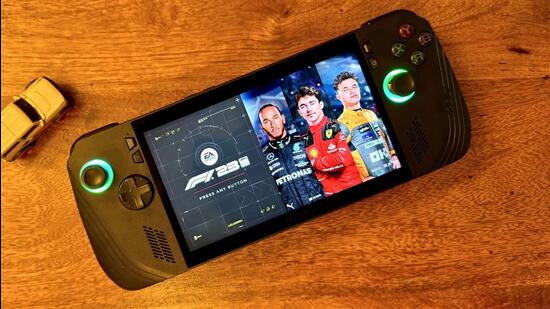Last year, when we had analysed the then unique Asus ROG Ally, we’d noted there is still work to be done for portable gaming consoles running Windows 11 as the foundation for the experience. A year later, the Asus ROG Ally X as sequel arrives with what still feels like two disparate elements, somehow less opposed to each other’s existence. Credit is due to software improvements, with Asus in a cajoling the Windows experience. A portable gaming console with Windows 11, might just work as an idea. Core to this will be the absolutely massive library of games for the most popular operating system in the world.

We thought portable gaming consoles were left behind, once the Sony PlayStation PSP was shelved, many years ago. Those assumptions may have been greatly exaggerated. While Sony is busy making limited utility accessories such as the PlayStation Portal, Asus’ sequel is proving a point. A point for which you’ll be shelling a significant amount of money. For now, the ROG Ally X is available in just one spec (that’s with the AMD Z1 Extreme chip; model RC72LA-NH021W) and you’ll be parting with ₹89,990 to support your gaming enthusiasm. It’s a typical trajectory of annual inflation, with last year’s Z1 Extreme powered Ally then priced at ₹83,990 which has since corrected to ₹49,990.
For many, there will be a persistent debate about whether to buy a portable gaming console or a gaming laptop. Utility and how you prefer to game, will define that. With Windows as the constant, there are the Microsoft’s Xbox Game Pass, EA Play, Epic and Steam libraries, to name a few. Asus’ software smarts such as the slick Armoury Crate SE app being the bridge between your downloaded games and the OS, where Windows falls short. AMD’s utility extends further controls over how you want the hardware to interface.
That said, there are still elements which don’t seamlessly blend – try using the physical keys to select an app or game shortcut on the desktop; you’ll eventually double tap the screen to open it. It’s not an Asus limitation, its just how Windows is.
Though the ROG Ally X console may look somewhat identical to its predecessor but there’s now a bigger battery in play (it’s a significant jump, double the capacity to be precise), whilst weight distribution changes mean your wrists are more at ease. A 40Wh battery makes way for an 80Wh battery – this is even larger than some gaming laptops. That’s the perspective for an approximate 70-gram weight increase. It could’ve been more, instead points to Asus’ approach to the console’s elements as a collective, finding ways to reduce bulk elsewhere.
Therefore, the ROG Ally X is much more receptive to the idea of gaming, when it isn’t plugged in. Here’s a real-world illustration – 60 minutes of continuous F1 2023 gameplay ended up in the charge dipping from 100% to 64%, at around 80% screen brightness, and the console in ‘Performance’ mode. Reduce the brightness, enable AMD’s Radeon Chill option, and those stats improve further. This can be a viable companion on your next airplane journey.
Yet, at 678 grams, chances are you may want to take a break for a few minutes every hour, into an extended gaming session. Redesigned grips are more comfortable to hold and ABXY keys feel more responsive. Joysticks are repositioned for easier access for the thumbs, but to be fair, it didn’t pose a challenge earlier too.
Generational improvements to build on an element of continuity. The AMD Ryzen Z1 Extreme chip remains in place in the ROG Ally X, as it did in the ROG Ally, but a lot around it has changed. The cooling architecture now has two 77-blade fans instead of the 47-blade fans from before (the blades are thinner; more is better), and the entire cooling system has been refined alongside. Results are clear – an hour of gaming on the ROG Ally X, and the console itself doesn’t feel warm, the fans don’t speed up and battery life doesn’t take a hit either.
An improved cooling system is one way of improving battery stamina, Asus still hasn’t left any cards on the table, and doubled the capacity. Windows feels more stable and usable for this screen size and form factor, with fewer eccentricities than the previous generation struggled with. Microsoft has had little to do with it, in fairness.
We shouldn’t see the Asus ROG Ally X, as just a second-generation Windows based gaming console, or an annual upgrade that simply had to be done. It is instead proof of Asus’ efforts in making this handheld category genuinely viable for gamers. Their software done a lot to bridge the differences that Windows had with not just this form factor but also video games on a device of this category. Microsoft will have to step in at some point to make Windows more usable here, a broader extension of the compact mode they’ve added to the Xbox app for such devices. Microsoft knows, work is needed. Whether they will walk that path, is an unknown. The Asus ROG Ally’s biggest strength is, it can play pretty much any video game or AAA title you can think of.


